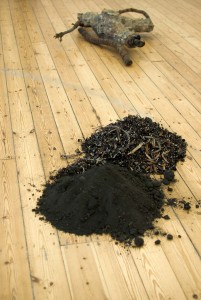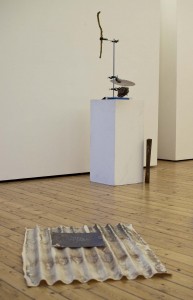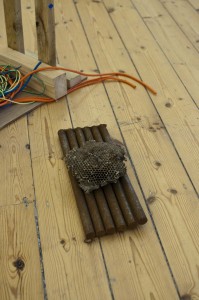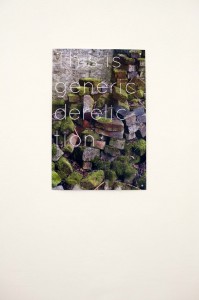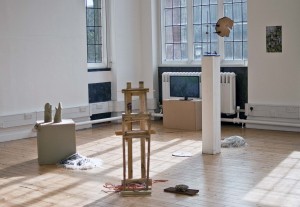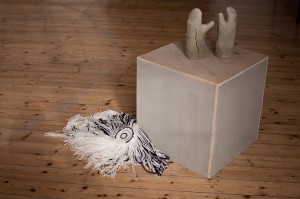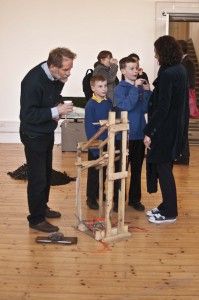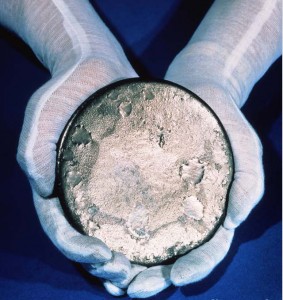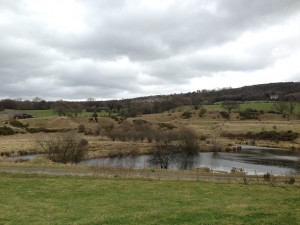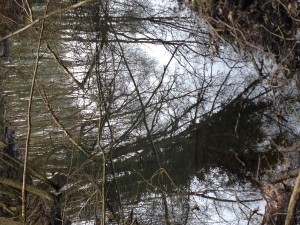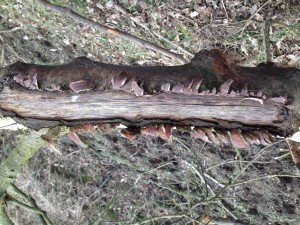Information about participating artists
Mair Hughes
Through her sculptural practice, photography and drawing, Mair elaborates a vocabulary of matter. Simple drawings hint at absurd material states. Through displacement and dislocation, Mair abstracts real objects into sculptural symbols, unanchored from their linguistic associations. Equally, she reconstructs objects using alternative materials, exposing her own layers of artifice.
Mair Hughes is currently artist in residence with the Canals and Rivers Trust Wales, and is envisioning the archaeological past and the ecological future of a particular post-industrial site, the Montgomeryshire Canal. As the canal in question is only partially navigable, she has observed its ability to be at once industrial ruin, ecological sanctuary, alternative route way and tourist attraction.
She is approaching her initial exploration of this site through an accumulation of adapted fieldwork methods, including photography, drawing, walking, writing, historical research and free association.
Mair Hughes is a Welsh artist, graduate of the Master of Fine Art in Glasgow in 2007. After graduation she was awarded a fellowship by the Royal Scottish Academy. From 2008 to 2010 she was committee member at Glasgow Project Room gallery. She has exhibited widely, and recent projects include Utopian Realism, a two-year multidisciplinary collaborative project.
Katie McGown
Katie McGown translates sites and structures into cloth, a shift that moves the built exterior into scales and substances of the domestic interior. Often documenting these transitions with photography, this process ruptures ideas of permanence, gender and received hierarchies of materials to instead present narratives of structural and social instability.
For XL Gallery, she has produced a new series of photographs and sculptures in response to the Oare Gunpowder Works, now a country park near her home in East Kent, but formerly a major site of explosives manufacturing first established in the late 1500s. Production ended in the 1930s as another war loomed, and it was deemed too vulnerable a target for attack. The site abandoned, an anticipatory ruin was created; the quiet remains of the factory buildings and dense vegetation disguising the destructive history of the grounds.
Originally from Canada, McGown moved to the UK in 2005 to pursue an MFA at the Glasgow School of Art. McGown has exhibited widely in across the UK and Europe and was made a member of the Royal British Society of Sculptors in 2011. She is presently completing a practice-led PhD at Northumbria University under the supervision of Professors David Campbell and Christine Borland.
Bridget Kennedy
Interpreting and responding to the specifics of a place forms the foundation of Bridget Kennedy’s creative practice. Through sculpture, installation, photography and video she investigates the impact and evidence of societal change on the landscapes she encounters. By re-presenting different types of information about these places Kennedy looks to bridge the gap between conventional forms of knowledge and a more sensory, material experience.
Through her association with Power in The Land, a visual arts project involving 10 artists from across the UK, she has become engaged in research relating to the planned closure of Wylfa Nuclear Power Plant. This research has led her towards new ways of thinking about the interaction between non-human species at a specific site. She is considering these non-human entities in the role of witness; within the context of The Power in The Land project they have been witness to the life span, over 50 years, of the last Magnox fuel rod nuclear power plant. For the duration of the XL Gallery installation Kennedy will be exploring some of the materials she has gathered during her research into the Wylfa site as well as those that relate to the nuclear power industry in a wider context.
Bridget Kennedy is based in Northumberland. She gained her Masters in Fine Art in 2007 at Glasgow School of Art and is currently Innovative Teaching Fellow in the Fine Art department of the University of Newcastle-Upon-Tyne.
Olivia Turner
Olivia Turner’s practice encompasses sculpture, installation, video, performance and drawing. Her work is deeply rooted within the idea of knowledge gained through making and from this, the concept of excavation becomes implicit to her work, and how it manifests itself in processes and objects. Turner’s presence is felt throughout her work, gaining elemental understandings of material and matter through the haptic, primitive validations of touch and observation.
Turner is currently working within a research collective, Anatomy of Site, a cross-discipline collaboration between Fine Art, Archaeology and Medical Anatomy. Anatomy of Site is centred on an industrial ruin: a one hundred year old object shipped from Norway. For the XL Gallery, Turner will conceptually, representationally and physically depict the object’s transformative journey, displacing the found object and re-contextualising it through conversations of space and matter.
Olivia Turner is a Fine Art student at Newcastle University, influenced by her research at Shotton Colliery of found and excavated materials, and her studies at Bergen Academy of Art and Design, Norway. She is the founder of Anatomy of Site, a work supported by Newcastle University’s Institute for Creative Arts Practice, and connected to the international research group Topographies of the Obsolete. She has also been awarded the Bartlett Travel Scholarship 2015.

